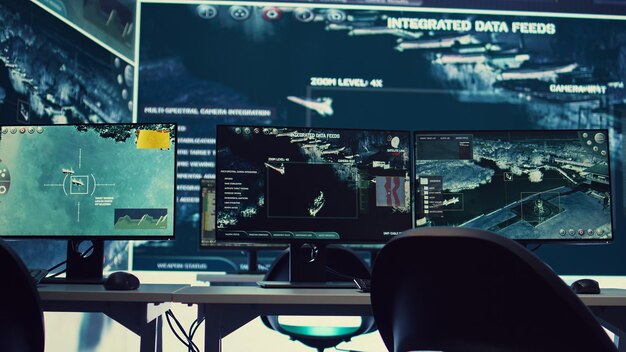
Sponsored article
In today’s fast-evolving landscape, where aerial threats pose significant challenges to national security, the role of advanced imaging technologies has never been more critical. These technologies offer transformative capabilities for detecting and responding to potential threats swiftly and accurately. By integrating innovative solutions into surveillance systems, organizations can enhance their defensive strategies and ensure a more secure environment. Explore the dynamic world of advanced imaging and its profound impact on threat surveillance.
The realm of aerial surveillance is experiencing a transformative shift with the integration of advanced imaging technology. This wave of innovations is unlocking new capabilities in effectively identifying and managing potential aerial threats. Central to this evolution are cutting-edge solutions that provide high-resolution, adaptable imaging that seamlessly transitions between optical and thermal modes, regardless of environmental conditions. These imaging technologies not only enhance clarity but also boost the precision needed for critical surveillance operations, making the tracking and identification of drones and other aerial objects more efficient than ever before.
One standout advancement is the development of sophisticated electro-optical and infrared systems, which offer automatic target tracking and continuous zoom capabilities. These technologies seamlessly integrate with existing RF and radar systems, enhancing the detection and tracking of aerial threats with unparalleled accuracy. The MADDOS system exemplifies these breakthroughs, featuring a revolutionary camera for tracking drones that redefines security measures. Through these advanced imaging innovations, surveillance solutions are setting new standards in threat detection and management.
Integration with AI and machine learning is revolutionizing advanced imaging technologies for enhancing aerial threat surveillance. By seamlessly incorporating AI integration into aerial threat detection systems, these technologies significantly enhance real-time data processing capabilities. As drones and other aerial vehicles continue to pose complex threats, AI-driven systems can efficiently sift through vast amounts of imaging data to pinpoint potential dangers. Machine learning algorithms are trained to recognize patterns and anomalies within this data, allowing for quicker and more accurate threat identification. This advanced level of differentiation enables systems not only to react more promptly but also to reduce the likelihood of false positives, ensuring a high level of operational precision.
Moreover, these cutting-edge technologies amplify decision-making processes by delivering actionable intelligence to human operators tasked with aerial threat detection. AI integration facilitates a symbiotic relationship between machines and human decision-makers, where machine learning models continuously adapt and learn from new data, improving their predictive accuracy. As a result, operators gain access to real-time insights, which enhances their ability to make informed decisions swiftly during high-stakes operations. The convergence of AI and machine learning with imaging technologies marks a transformative era in aerial threat surveillance, setting new standards for efficacy and reliability.
The integration of advanced imaging technologies into national defense systems marks a pivotal shift in threat surveillance capabilities, significantly impacting national security. These technologies enhance real-time data acquisition and analysis, enabling quicker response actions to potential threats. By providing high-resolution imagery and advanced data analytics, they facilitate a better understanding of airspace activities, leading to improved decision-making processes. The technological impact of these systems helps in identifying suspicious patterns and anomalies, thereby augmenting national security protocols. As a result, they support the development of more proactive and comprehensive surveillance strategies, safeguarding national borders effectively.
Furthermore, advanced imaging technologies contribute to strengthening defense systems by offering:
With these capabilities, national security efforts are better equipped to address both traditional and emerging aerial threats, ensuring a more secure and resilient defense posture.